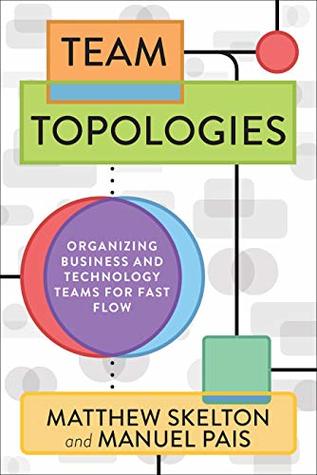More on this book
Community
Kindle Notes & Highlights
Read between
September 26 - October 16, 2021
An enabling team is composed of specialists in a given technical (or product) domain, and they help bridge this capability gap. Such teams cross-cut to the stream-aligned teams and have the required bandwidth to research, try out options, and make informed suggestions on adequate tooling, practices, frameworks, and any of the ecosystem choices around the application stack.
The end goal of an enabling team is to increase the autonomy of stream-aligned teams by growing their capabilities with a focus on their problems first, not the solutions per se. If an enabling team does its job well, the team that it is helping should no longer need the help from the enabling team after a few weeks or months; there should not be a permanent dependency on an enabling team.
the mission for a platform team is to provide the underlying internal services required by stream-aligned teams to deliver higher level services or functionalities, thus reducing their cognitive load.
We also created a special continuous-delivery (CD) team to help other teams adopt CD practices, like automated deployment pipelines, test automation, rich monitoring, and automated environment provisioning.
A good platform provides standards, templates, APIs, and well-proven best practices for Dev teams to use to innovate rapidly and effectively.
A good platform should make it easy for Dev teams to do the right things in the right way for the organization; this applies to all kinds of product development, not just those involving software.
“software developers love building platforms and, without strong product management input, will create a bigger platform than needed.”
This drive to “simplify the developer’s life” (as Conway puts it)20 and reduce cognitive load (see Chapter 3) is an essential aspect of a good platform.
Could we, as a team, effectively consume or provide this subsystem as a service? If the answer is yes, then the subsystem is a good candidate for splitting off and assigning to a team to own and evolve.
At a more technical level, we use Pact for contract testing services and inter-team communication. Pact has really helped us to adopt a clear, defined approach to testing services, setting expectations across all teams about how to test and interact with other teams.
“If you have microservices but you wait and do end-to-end testing of a combination of them before a release, what you have is a distributed monolith.”10
Figure 7.5: Primary Interaction Modes for the Four Fundamental Team Topologies Stream-aligned teams use X-as-a-Service or collaboration; enabling teams use facilitation; complicated-subsystem teams use X-as-a-Service; platform teams use X-as-a-Service for teams that consume the platform.
the X-as-a-Service interaction should be low friction and should need only occasional or limited communication. If the stream-aligned team is spending many hours trying to use a component, this is a signal that something is amiss: Is the component boundary in the right place? Is the component API well specified? Is the component easy enough to use? Does the complicated-subsystem team have a missing capability within the team, such as UX or DevEx?
many organizations fail to define what good team interactions look like, resulting in confusion, annoyance, and ineffectiveness.
Collaboration: two teams work closely together for a defined period to discover new patterns, approaches, and limitations. Responsibility is shared and boundaries blurred, but problems are solved rapidly and the organization learns quickly. X-as-a-Service: one team consumes something (such as a service or an API) provided “as a service” from another team. Responsibilities are clearly delineated and—if the boundary is effective—the consuming team can deliver rapidly. The team providing the service seeks to make their service as easy to consume as possible. Facilitating: one team helps another
...more
Some degree of collaboration between teams is expected, but collaboration often doesn’t scale across the organization; and consuming things as a service is often more effective as the number of teams increases.
many organizations are unaware of how a poorly chosen “reorg” can destroy an organization’s strategic capability for innovation and sustainable software delivery.


